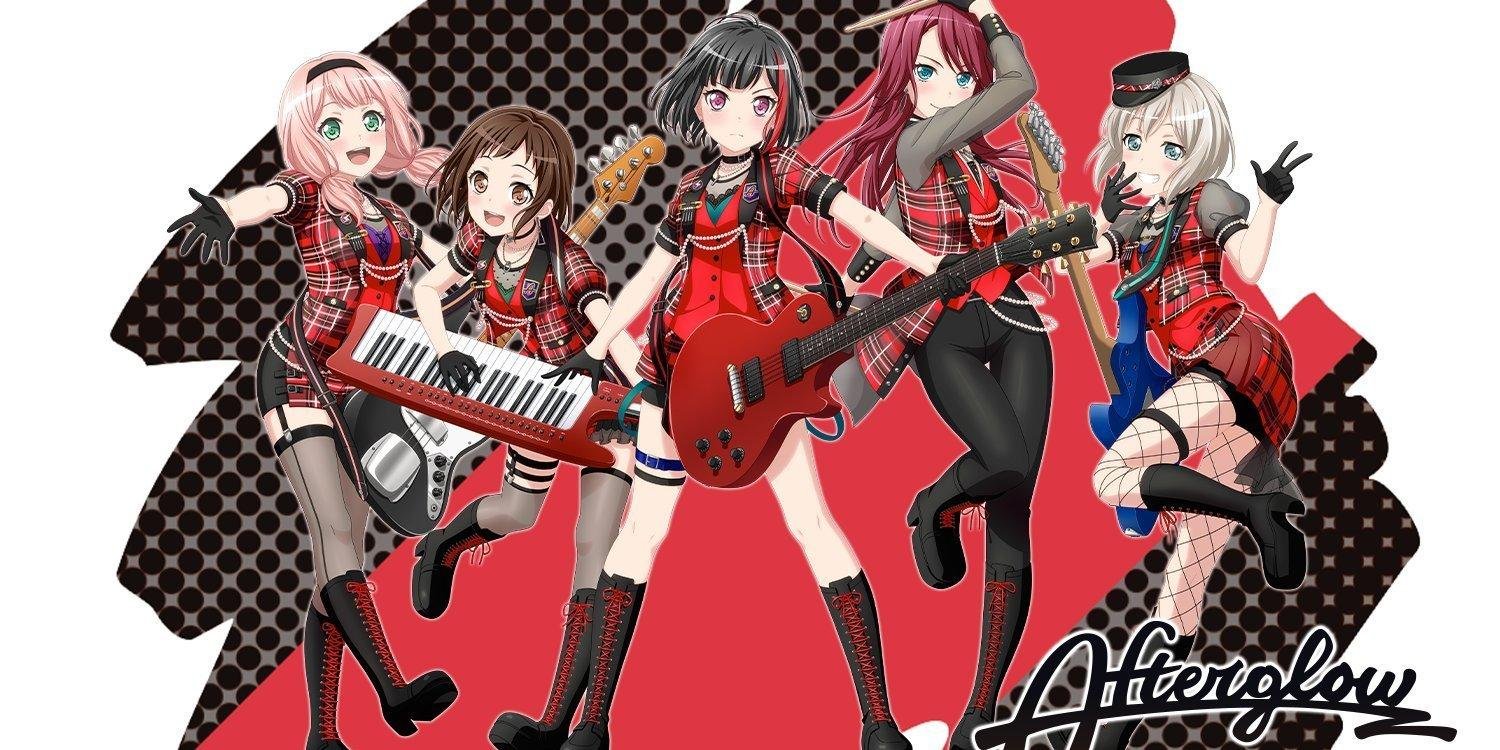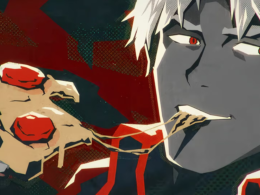This article was contributed by Kakuchopurei.
Originally published on 17th August. Brought forward due to the release of the new BanG Dream! anime.
Anime and music share more in common pair than given credit for. Music performances, in particular, are prominent in plenty of anime. Popular shows such as K-On!, Angel Beats, and so on come with their own original music, which then becomes part of the merchandise that fans eagerly collect.
Within the past decade though, this niche aspect of anime fandom has grown much bigger in popularity, even to the extent that it’s now become its own distinct genre. One such anime music project and media franchise marches to the beat of its own literal drum, as well as the riffs and croons of its electric guitars & Japanese-esque Stevie Nicks-wannabe vocals: the BanG Dream! project.
With an anime movie coming out for the first time in Malaysia this week, we figured it would be best to bring you up to speed about this anime music combo.
What Is The BanG Dream! Project?

BanG Dream! (or Bandori for short) comes from the idea of shooting for one’s dreams. First launching in January 2015 by card/mobile game-making company giant Bushiroad, it follows the same path as The Idolmaster, Love Live, Revue Starlight, and similar properties by placing a large focus on anime characters who sing and perform. It is a broad multimedia franchise that, interestingly, prospers on creating a link between anime characters and real-life performers.
As such, the BanG! Dream project appears in a vast amount of entertainment formats, from a mobile rhythm game to manga and anime adaptations, as well as last but not least, bustling live concerts.
While most other IPs focus on idol singers who sing and dance, Bandori is unique in that it instead uses music bands to captivate its audience. What this means is that the characters of Bandori all sport stylish guitars, drums, and keyboards to perform their music. Look hard enough and you might even notice real-life parallels in each character’s instrument. A realistic duplicate of Rokka from RAISE A SUILEN’s electric guitar even exists for a whopping US$4,905!
This is the biggest distinction that sets Bandori apart from its contemporaries. Budding musicians will no doubt have a soft spot for Bandori’s various live bands. And while idols dancing on stage do have a charm of their own, there’s also nothing like rooting for characters who themselves are experts at making music, and who accurately pay respect to live musicians.
Where Reality And Fiction Converge

Bandori has a total of nine bands spread across its various media, with plenty of these groups focusing on different music genres. Whether you’re into Pastel*Palettes’ J-Pop, Roselia’s J-Rock, or something experimental like Hello Happy World, there’s bound to be a band here that fits the mold somehow.
Adding on top of that are the unique members of each band, all of whom have their own colourful personalities that you can get to know over time.
There’s also the massive voice cast behind these characters. While there are too many to name, Bandori’s cast is a mishmash of voice actresses that anime fans may already recognize, as well as those who found fame through Bandori. These voice actresses not only voice their respective characters but are also in charge of the singing for their songs.
A few of these voice actresses even partake in live performances. Bands such as Poppin’ Party, Roselia, RAISE A SUILEN, and Morfonica have members who are perfectly capable of handling musical instruments on top of catering to crowds at live concerts.
Why Should I Care?
Bandori has gained popularity even beyond Japan’s shores. There are fans who got in it because of the anime, the live performers, or even through the game. Though international fans can’t easily attend concerts, screenings of these concerts are occasionally held at theatres, where fellow fans get to embrace the spirit of the live performances.

Just like traditional music groups, Bandori’s bands play their own original music and regularly release singles and albums that you can listen to. But beyond that are also the anime characters, voice actresses, and a universe that binds them all together.
With so many different aspects to enjoy and a number of bands to choose from, chances are that Bandori has something somewhere that’ll catch you hook, line, and sinker.
It helps that all of these different facets of Bandori only help enrich the experience once you delve deeper into the fandom and its nuances.
But if these somehow don’t already pique your interest, you might change your mind when you listen to some of Bandori’s cover songs. The mobile rhythm game may not sound like much, but beyond its original music is also home to cover songs from popular anime such as Sailor Moon, Fullmetal Alchemist, Eureka Seven, Evangelion, and the list goes on.
You’ll even find covers of VOCALOID music and -my personal favourite- the Persona games. Of course, these renditions are all performed by Bandori’s numerous bands. If you’re a big fan of otaku-related media, there’s a treasure trove of goodness here just waiting to be opened.
Who knows, you might even prefer some of these covers to the original versions!
I’m Interested, But There Are Too Many Characters!

With so many bands and roughly three dozen characters to name, starting out on this franchise is no doubt intimidating. However, Bandori doesn’t necessarily expect you to remember who’s who and where they belong right away. It even offers many easy entry points to the franchise. Whether you’re starting with the music, the anime, or even the game, there’s no definite wrong approach.
The mobile game, which is a freely available app on Android and iOS, is a great way to acclimate yourself to Bandori’s music. You’ll get access to a library of their songs that you can play along to, and also get to enjoy character interactions while collecting gorgeous artwork of the various characters. If you happen to be a big fan of other anime or game franchises, you’ll also be pleasantly surprised by the lineup of cover songs.
Personally speaking, Roselia’s excellent cover of Persona 3’s “Memories of You” was what led me to listen to some of their own music, eventually leading to favourites such as “Kakumei Dualism” and “Fire Bird”.
The anime is also a neat place to start from if you’re looking to get invested in characters. The story mainly follows the exploits of the Poppin’ Party band, but slowly expands to the other groups over time. If you’re looking to see how these colourful personalities build lasting friendships, then the anime is surely a no-brainer. With up to three available seasons, as well as two films out, you’ll have plenty of time to get to know them.
But maybe you aren’t keen to invest in a lengthy TV series just to learn about the girls. Bandori’s got that covered too. A lighter anime series, called BanG Dream! Girls Band Party!☆PICO, is freely available on its official YouTube channel. Featuring chibi versions of the characters, the episodes are brief three-minute romps that deftly introduce the dynamics of Bandori’s characters to you.
You can even check out the channel’s English Club series. The voices behind the characters usually come forward to produce funny skits for a segment called Bandori TV. Though Bandori TV is only broadcast in Japan, the English Club series is specially made for the international fans who feel that they’re missing out. If you’re looking for a glimpse into the real people behind the anime avatars, here’s a good place to start.
Other ways to discover Bandori include their live performances, as well as the past music videos they have done. Seeing the bands (both real and fictional) in action might just leave a good impression. Of course, simply digging through their list of music also works, and would even give you a good starting point if a particular band’s style of music interests you.
Listen And Play
BanG! Dream has only grown in popularity over the years. So much so, in fact, that it even has its own male-centric spin-off, ARGONAVIS from BanG Dream!. There are plenty of singles and albums to experience, a game to keep you occupied on the daily, as well as fun merchandise to collect such as official music sheets, nendoroids, clothing, and much more.
The biggest draw, though, remains its anime aesthetic complemented by the allure of live concerts, as well as its overall great and diverse music.
After all, you’d be hard-pressed to find any other property that expresses this contrast so well. Perhaps that reason alone is a good enough excuse for giving Bang! Dream a shot.












